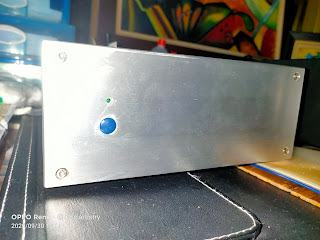How much of that knowledge you acquired put to use for livelihood? How much of audio knowledge you learned apply to your system? Reading audio knowledge merely for academic, don't want to look like a fool in a conversation? Building a presumption and top it up with assumptions, a fake guru in the making. I'm a steadfast proponent of practicality, a practitioner, I get my hands dirty. Thank you.
The thing with the measurements, I don't need them. To me, measurements are a great protocol to ensure quality in the production but not anything outside of that. For one, frequency response conveys very little on tone quality and phase. Two-way speaker, three-way speaker, concentric speaker, open baffle speaker, panel speakers, even respective frequency response looks the same, they fail to convey the difference. Come on, you can do better than that.
Playing loud unveils room acoustic shortcomings. Mayday mayday, the siren is heard, your audio in limbo. Two situations you don't want to find yourself in, either the amp is running out of juice, the noisy room or both. Upgrading to a more powerful amp is easy, swipe your credit card. Stop being naughty for a year, you just made your wife a happy woman seeing her hubby home every night. Room acoustics on the other hand is a totally different animal, you have no clue where to begin. Room acoustic solution is very much trial and error, cross your fingers hoping everything goes fine. You know what? In most cases, there'll a trade-off. If room treatment means nothing to you, try listening in an untreated room, your high-end system doesn't sound all that great for what it asked.
I dug deep in room acoustics, experimenting with things you wouldn't ever think of. I'm doing this purely for self-actualization. I care less of how gung ho your equipment some vow the gateway to high fidelity, only a well-treated room delivers pristine and clean sound, a decent system should at least realize this. A system in a living room or awkward room, I'm sorry to break this to you, the sound is not good enough regardless of the equipment. Yes, I'm critical. I've now gotten to a stage where my room noise still at bay cranking the volume, tempting me to step on it, to go louder. No, I don't have a single piece of absorptive panel in my room but technically, time delay. Absorption is toxic, they impede the life of music like you never know, acoustically death. If the room adds a tad of liveliness, I embrace it. Trying to eliminate room induced airiness is a puerile task, raising more questions about when to stop.
The latest affirmations of my work on a system come from not one, not two but four fellow audiophiles. The new resolution, they showed me a hole on their face. How could the little unassuming objects improve sound so dramatically? Make no sense I know, the truth is in the listening. If you choose to believe in measurements and reject hearing, you've no business in audio. Rarely I tune other's system unless close friend. At almost zero cost, I used whatever I can lay my hand on. To be honest, there's more to be done but I just stopped there. Speaker positioning alone, many don't get passed speaker positioning. While many endorse the rule of the third or the fifth, I don't. What's this? An engineering or rational generalization? Applicable to all speakers? Think before you answer. It's like a 10%, 15% or 20% cable allotment rationale. The ultimate speaker placement depends on how much you leverage on room gain, we listen to direct and reflected sound for goodness sake. Don't rationalize sound.
Every room poses different room modes requiring different tuning approaches. Listening is the first line of tuning. If you can't detect the subtle changes in sound, your sonic road ends here. Pack up and go. Now you see, the showroom decorated room has no sonic merit particularly those pre-decorated rooms, they were pre-tuned, look good and presumed to sound good. I'm not going to lie, even my room isn't 100% after rigorously tuned.
Why do we always see audio discussions ended up with long faces, I blame the exposure. The big boys will tell you have not even played enough with high-end stuff to know what you really talking about while the lower fi boys say you don't spend insane money to attain the sound. Both parties standby their argument, unfortunately, there's no middle ground.
I don't deny the goodness of technology. Technology is what keep audio going on. Is technology matters? Of course, it matters. The improved parts have largely accounted for the improvement in sound. Everything is down to implementation and execution. To be on top of the game, in my opinion, one requires the mind of an artisan because equipment voicing is very subjective. Anything and everything that has got to with human is subjective, isn't it right? By repetition, you accumulate experience even though electrical and electronic is not your speciality, you want to grasp as much knowledge as you can. I never say audio a cheap adventure as with any other passions. Passion is the single element that drives us to achieve a greater thing and therefore passion gets us going, we're driven to learning.
Conclusively, the sound is a personal preference but then again we all know how realistic sound is like. I wouldn't want an imaginative sound that unreal. Hence, I want my system to take all genre of music until my system runs out of juice, my system limitation. That's ok. The middle of the road sound. Not hard to come across a system skewed towards one extreme and fare poorly on the other music genre, a picky system is not what I have in mind since I listen to many music genres.


